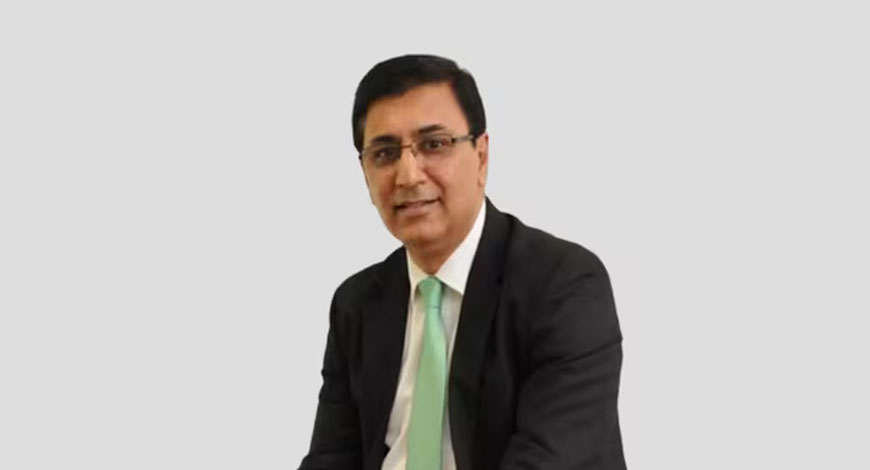Headlines of the Day
Vi may need more support from government, CEO

Vodafone Idea may need further support from the government once the current moratorium on the adjusted gross revenue (AGR) and spectrum dues ends in September 2025, chief executive officer Akshaya Moondra told FE on Wednesday. The company may either seek further deferral on the payments or urge the government to convert the dues into equity, he said.
“After one-and-a-half years, we will be in a position to see what support we need from the government. Initially, we may need some support and it’s the government which will have the right to choose either to convert or defer the dues. That is their choice every time,” Moondra said.
Vodafone Idea’s total dues stand at around Rs 2 trillion, of which 98% — Rs 1.96 trillion — is owed to the government in AGR and spectrum dues. The bank debt is only of Rs 4,400 crore. Once the moratorium ends in September 2025, the company will need to pay to the government Rs 29,100 crore for FY26 and Rs 43,000 crore annually from FY27 till FY31.
Moondra explained that there are two streams of instalments — one is the original instalment, which in FY26 is about Rs 17,000 crore and in FY27 about Rs 26,000 crore.
“The remaining amount is coming from the deferred instalments. In its reforms package, the government provided that this can be converted to equity,” Moondra said, adding that the conversion opportunity for the deferred spectrum may not be required for every year.
The company may need further government support because the fundraising plan of Rs 45,000 crore, even if fully realised through a combination of Rs 20,000 crore through equity-linked instruments and Rs 25,000 crore through debt, may not be enough for the company to meet all its requirements.
Vodafone Idea has also filed a curative petition in the Supreme Court on the AGR and spectrum dues and its outcome will also decide the future course, Moondra said.
Vodafone Idea’s Rs 18,000-crore follow-on public offer (FPO) will open for subscription starting Thursday. The company has already raised Rs 5,400 crore from 74 anchor investors.
“When the government announced the reforms package in 2021, any speculation whether the company can continue or not was put to rest. This round of funding will put to rest the speculation over whether the company can make investments,” Moondra said. “This is not the only funding, we will also have debt funding, something coming from the promoters. So, the overall investment size is larger than the FPO,” he added.
From the proceeds of the FPO, Vodafone Idea will invest in three areas — 4G population coverage expansion where it has a significant gap with the competition; increasing 4G capacity as traffic starts growing; and 5G coverage.
In the absence of network investments, Vodafone Idea has been losing subscribers and its subscriber market share has even fallen below 19%, compared with over 70% market share of peers Bharti Airtel and Jio.
“Once we invest in the capex, the challenges will get addressed. We should be able to start participating in the industry growth, which has not happened over the last few years,” Moondra said.
According to him, when an increase in revenue happens by better leveraging of the assets, a very large proportion of that goes to Ebitda. “So, the improvement in our cash generation is predicated on funding being available and our making investment largely in 4G coverage,” he said.
Of the planned fundraise, the company has committed to invest Rs 5,700 crore to roll out 5G services.
While Vodafone Idea will have a delayed 5G rollout, it has not really missed the 5G bus, given the challenges faced by peers in terms of monetisation and recouping their investments. “The advantage we have is that while we are late into 5G, it has been a bit of a blessing in disguise because we did not get caught up in that situation where the rollout happened too quickly but the monetisation is not happening,” Moondra said.
In the April-February period, Vodafone Idea has lost 16.2 million mobile subscribers, taking its total base to 220.5 million, according to data from the Telecom Regulatory Authority of India (Trai). The churn in subscribers, however, is not related to the company’s 5G being not available, but its lack of 4G coverage and investments in creating more capacity.
The company is targeting to cover 40% of its existing revenue base with 5G initially in the next 2-2.5 years. After the fundraise, it is expected to roll out the services in 6-9 months. The company, however, will be guarded in its investments on 5G.
“If you have 5G spectrum, the incremental cost of rolling out somewhere to solve capacity issue is a good investment for 5G, but getting customers to use 5G and pay more, that is something which we will have to see. And that is where we’ll be calibrated in our 5G investments,” Moondra said.
On the 5G enterprise business opportunity, Moondra said features like low latency, slicing of spectrum give benefits, but those applications are yet to get established. Financial Express














You must be logged in to post a comment Login